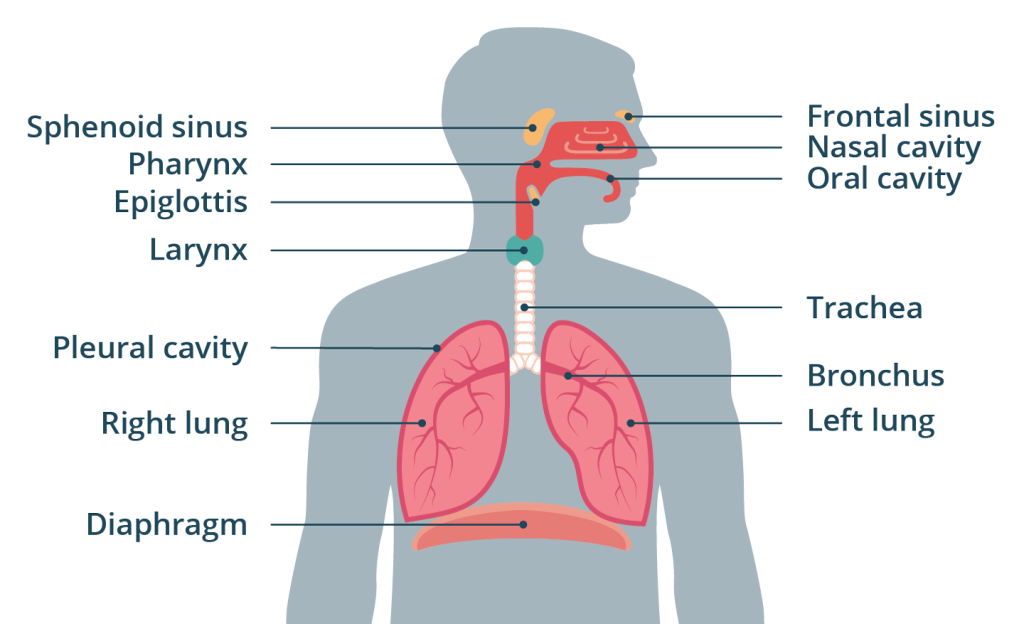function of the lungs In the intricate orchestration of human physiology, few organs play as pivotal a role as the lungs. Nestled within the chest cavity, these spongy, air-filled structures are not merely passive receptacles for air but are dynamic entities that facilitate the vital process of respiration. From the rhythmic expansion and contraction of breathing to the exchange of gases essential for life, the lungs execute a range of functions with remarkable precision and efficiency. Let’s delve into the depths of pulmonary physiology to unravel the mysteries of the lungs’ function.
1. Introduction to function of the lungs
function of the lungs Before delving into the specifics, it’s essential to grasp the fundamentals of pulmonary physiology. The lungs are integral components of the respiratory system, working in tandem with other organs such as the diaphragm, trachea, and bronchi to facilitate the exchange of oxygen and carbon dioxide. This exchange occurs via the intricate network of airways and tiny air sacs known as alveoli, where oxygen from inhaled air diffuses into the bloodstream, while carbon dioxide is expelled from the blood from aveoil
2. Breathing Mechanics: Ventilation
At the core of lung function of the lungs function lies the process of ventilation, commonly known as breathing. Ventilation encompasses two distinct phases: inspiration and expiration. During inspiration, the diaphragm contracts, flattening and expanding the thoracic cavity, while the intercostal muscles between the ribs contract, causing the ribcage to lift and expand. This increase in thoracic volume lowers the air pressure within the lungs, drawing air in through the airways. Conversely, during expiration, the diaphragm and intercostal muscles relax, causing the thoracic cavity to recoil to its resting position, thus expelling air from the lungs.
3. Gas Exchange: Oxygenation and Carbon Dioxide Removal
The primary function of the lungs to facilitate the exchange the gases between the air we breathe and the blood stream.This exchange occurs across the respiratory membrane in the alveoli, where oxygen diffuses from the alveolar air into the capillaries surrounding the alveoli, while carbon dioxide moves in the opposite direction from the bloodstream into the alveoli to be exhaledThis process, known as external respiration, is driven by differences in partial pressures of oxygen and carbon dioxide between the alveolar air and the blood.

4. Regulation of Acid-Base Balance
Beyond its role in gas exchange,function of the lungs the lungs also contribute to the body’s acid-base balance by regulating the levels of carbon dioxide in the bloodstream. Carbon dioxide, a byproduct of cellular metabolism, can act as an acid when dissolved in water, contributing to the pH of bodily fluids. To maintain optimal pH levels, the lungs adjust ventilation rates to either increase or decrease the elimination of carbon dioxide. This regulatory mechanism, known as respiratory compensation, helps counteract disturbances in acid-base balance caused by factors such as metabolic acidosis or alkalosis.
5. Pulmonary Defense Mechanisms
In addition to their respiratory functions,function of the lungs the lungs serve as frontline defenders against inhaled pathogens, pollutants, and particulate matter. A complex array of defense mechanisms, including mucociliary clearance, cough reflex, and immune surveillance, work in concert to safeguard the respiratory system from potential threats. The mucociliary escalator, for instance, consists of specialized cells lining the airways that produce mucus to trap foreign particles, which are then expelled through coordinated beating of cilia towards the upper airways for removal.
6. Sensory and Non-Respiratory Functions
While primarily recognized for their respiratory role, the lungs also harbor sensory receptors and participate in non-respiratory functions. Pulmonary stretch receptors located in the airway smooth muscles sense changes in lung volume and play a role in regulating breathing patterns. Moreover, the lungs produce and release various bioactive substances, such as surfactant, pulmonary vasodilators, and inflammatory mediators, which influence vascular tone, immune responses, and overall homeostasis within the respiratory system.
7. Clinical Implications and Disorders
Understanding the function of the lungs is paramount in diagnosing and managing a myriad of respiratory disorders and diseases. Conditions such as asthma, chronic obstructive pulmonary disease (COPD), pneumonia, and pulmonary fibrosis can impair lung function and compromise respiratory efficiency, leading to symptoms ranging from shortness of breath and coughing to respiratory failure. Respiratory therapists and pulmonologists employ various diagnostic tests, including spirometry, arterial blood gas analysis, and imaging studies, to assess lung function and guide treatment strategies.
8. Conclusion: Celebrating the Versatility of the Lungs
In summary, function of the lungs the lungs epitomize the marvels of biological engineering, seamlessly executing a multitude of functions essential for human survival. From the rhythmic choreography of breathing to the intricate exchange of gases that sustains life, the lungs exemplify efficiency, adaptability, and resilience. By unraveling the intricacies of pulmonary physiology, we gain a deeper appreciation for these vital organs and the indispensable role they play in maintaining homeostasis and promoting health. Let us continue to explore and celebrate the versatility of the lungs, unlocking their secrets to enhance our understanding of human biology and advance medical science.


